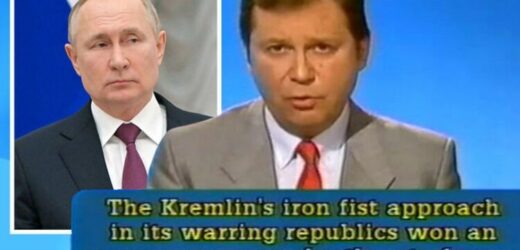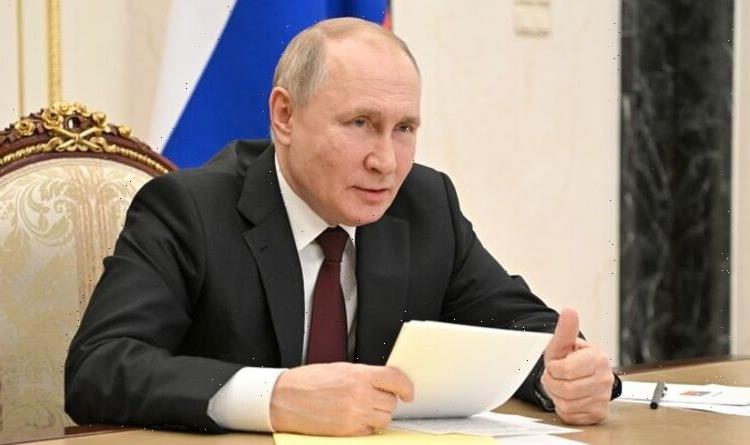Staggering footage of Burns day storm destroying Britain in 1990
We use your sign-up to provide content in ways you’ve consented to and to improve our understanding of you. This may include adverts from us and 3rd parties based on our understanding. You can unsubscribe at any time. More info
The Met Office has issued a “stay indoors” warning with Storm Eunice set to move in with winds reaching 100mph on Friday. It comes after Storm Dudley left thousands without power and caused travel chaos on roads and train lines. The outfit has also issued a “danger to life” amber warning covering almost the whole of England for Friday.
The intensity of the storm has been contrasted with the infamous Burns Day storm which caused devastation across the UK.
Beginning on January 25, 1990, it was one of the worst storms the UK had experienced in living memory, seeing winds of 107mph in Aberporth, Wales.
Such was its intensity that it became known as Cyclone Daria.
A harrowing report from BBC Two at the time showed scenes of chaos, with roofs swept off of buildings and scaffolding thrown off tower blocks.
Towards the end of the report came an even more sobering message: news of the threat of war from Russia as the Soviet Union went through the process of dissolution.


The news presenter said: “The Kremlin’s iron fist approach in its warring republics won an uneasy peace and a threat of war.”
Today, the West believes Moscow has plans for an imminent invasion of Ukraine as it continues to add troops to a figure thought to exceed 100,000 personnel, all stationed along its shared border with the former Soviet state.
While Russia denies the claims, arguing that it is simply defending itself against NATO’s eastward expansion, many experts claim an invasion is part of Russia’s wider security strategy.
While the events mentioned in the 1990 report are far different from today, the parallels of war are chilling.
Back then, Moscow had been blighted by the process of the dissolution of the Soviet Union — which began in 1988 — and was slowly losing its iron grip over its territories.
JUST IN: Russian media accuses Ukraine of launching grenades sparking war fears

Seven days before the report, on January 19 and 20, an event called “Black January” took place in Baku, the capital of Azerbaijan.
Here, responding to activities by the Azerbaijani independence movement to overthrow the Soviet Azerbaijani government, Russian troops marched on the city and killed around 147 civilians and injured a further 800.
General Secretary of the Soviet Communist Party Mikhail Gorbachev and defence minister Dmitry Yazov asserted that military law was necessary to thwart efforts by the movement.
Before this, a visit by Gorbachev to the Lithuanian capital of Vilnius on January 11 to 13 provoked a pro-independence rally attended by an estimated 250,000 people.
Other Baltic nations Estonia and Latvia soon pushed back against Soviet rule, each declaring independence from the union.
DON’T MISS
Two countries tipped to leave EU in new row [REPORT]
GB News: Novak Djokovic slammed amid ongoing Covid vaccine row [INSIGHT]
Shark attack horror: First Sydney killing in 60 years was ‘incredibly [ANALYSIS]


Soviet Russia faced similar disruption across its territories, including in Ukraine, which saw a hundreds of thousands strong human chain form between Kiev, Lviv, and Ivano-Frankivsk in protest.
And in Central Asia, anti-government riots took place in Tajikistan, while discontent simmered in the region’s other republics.
While smaller clashes broke out, no wider-scale war with Russia occurred.
The Soviet Union eventually dissolved and fell on December 26, 1991.

The day before, in what came to be seen as the pivotal moment, the Soviet flag was lowered and replaced by the Russian flag above the Kremlin.
Today, many argue that President Vladimir Putin wants to reestablish his country’s former union, and is slowly doing so by extending his sphere of influence.
Professor Julian Lindley-French, an internationally recognised strategic analyst and advisor in defence, who has worked with NATO, told Express.co.uk that current events in Ukraine were “part of Putin’s wider European security strategy” — first getting a hold of Ukraine, then turning Belarus into a puppet state.
He said: “He’d then be influencing the states in the Black Sea region, and coercing even NATO and EU countries like the Baltic states, like Finland, like Bulgaria and Romania.

“Irrespective of their affiliations of the EU and NATO, Russia would have demonstrated that it can achieve its objectives to coerce other countries to do what it wants, to be compliant with its aims.”
Asked whether he believed Russia wanted to reclaim its former territories, he said: “The key word there is reclaim: in terms of President Putin, much of this is about his legacy.
“This is a man who was a KGB lieutenant colonel in the time of the fall of the Berlin Wall; he feels that Russia was humiliated.
“So yes, he would love to reestablish what he describes as a buffer, what is in reality is a sphere of influence over much of the area around his border from Norway in the North Cape to the Chinese border.”
Source: Read Full Article


